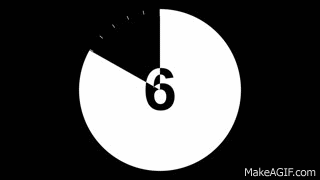If you have not read the first article about the Autonomic Nervous System, go to my main page and check out part one to get a basic idea of what the bits and pieces are!
The Autonomic Nervous System regulates the functions of our internal organs and muscles in the body. We often don’t notice the effects of the Autonomic Nervous System because it functions involuntarily. For example, most of us don’t notice when our heart rate changes. However, people can train their bodies to control they’re some of these functions.
As a refresher, the Autonomic Nervous System is responsible for reactions in two situations: the fight or flight response and the rest or digest response. Let’s dive deeper into how these responses operate in two different scenarios.
Imagine yourself at the park, enjoying a nice walk outdoors in good weather. Out of nowhere, a hungry bear shows up and is now on the path in front of you. Inside your body, there is a reaction from the sympathetic nervous system. This response originates from the spinal cord and a signal, or axon, is fired out to the organs and muscles. This causes pupil dilation, increased muscle fiber activation, and an increased heart rate that gives up that added sense of energy, strength, and awareness in dramatic situations. The gland that supports this reaction is the Adrenal Medulla, which pumps your body full of adrenaline. Milliseconds after seeing this bear, these reactions occur and the body is prepared to fight or flight.
Think of a situation, whether physically threatening, in a high-pressure scenario, and something surprises you and remember the feelings associated with that instance. Sometimes those reactions are necessary for survival, other times it gets in the way of your success. Wouldn’t it be nice to have more control over how you react to situations? Let’s take a dive into the Parasympathetic Nervous System, the vessel that will help you achieve this.
Let’s take another walk through the park, except there’s no surprise bear that appears. You’re walking down the path and you decide to sit down on a bench. This is known as Rest and Digest. This is your body conserving energy. This response originates from the base and top of the spinal cord, the signals take a longer time to reach the different muscles, glands, and organs to begin the Rest and Digest reaction. Decreased blood pressure, a slower heart rate, and the Adrenal Medulla shuts off are some of the systems that the Parasympathetic Nervous System has an effect on. This can be useful in stressful situations and keep reading to learn how one can control it.
There are a few ways a person can take control of their Autonomic Nervous System by activating the Parasympathetic Nervous System. You can use several of your senses to do this. Focusing on bringing your attention to a physical sensation. Here are two things to focus your attention on right now: focus your attention to where your feet are touching now and center your attention on the saliva in your mouth. Do you notice the sensation of your feet and the wetness of the saliva? These are small examples of ways to control your Autonomic Nervous System.
Here is an exercise I want you to do. Check your heart rate! Find a pulse and count for 10 seconds and multiply that number by 6. Keep that number. Then, sit upright in your chair with your feet planted firmly on the ground. With a straight back, watch the counter below and breathe in for 6 seconds, hold for a second, and exhale for 6 seconds. Do this for a minute then check your heart rate again and compare the two numbers. The second should be lower!
This is called rhythmic breathing and there are many other health benefits to doing this as well. To make this process more effective for your uses, you must make this idea a lifestyle skill; take every opportunity to rhythmically breathe, whether you are at work or driving in the car, you can develop this skill as you go about your day.
You have the what and the how, stay tuned for the why that will be coming out next week. Tag or share with a friend who can benefit from this idea.

















